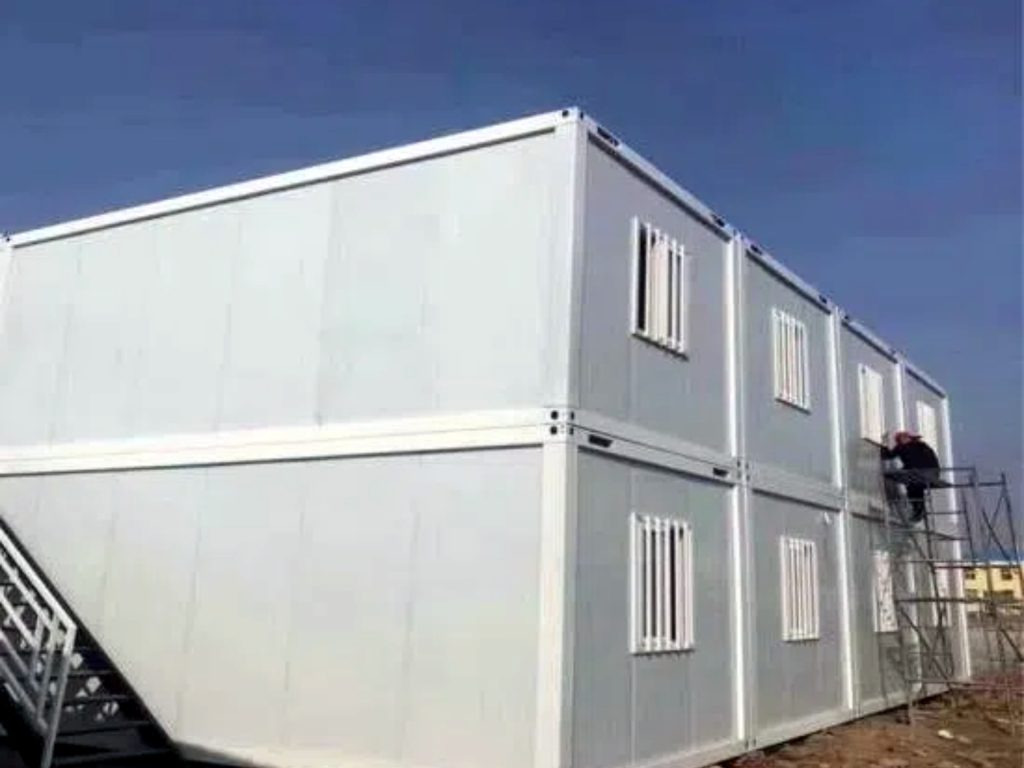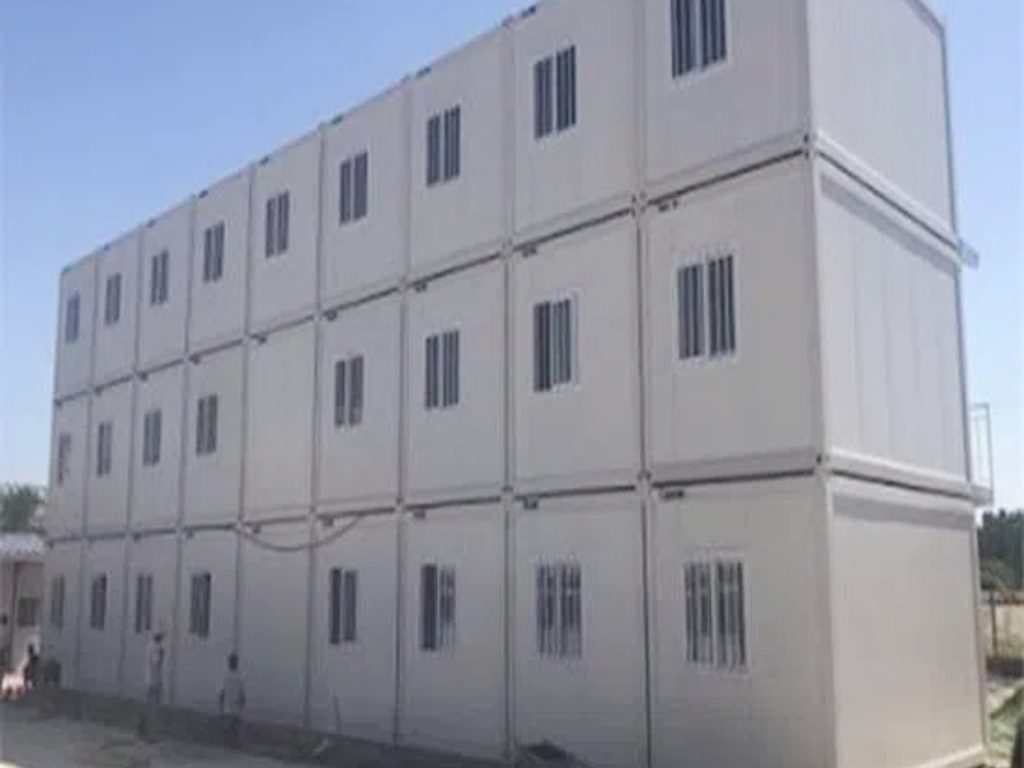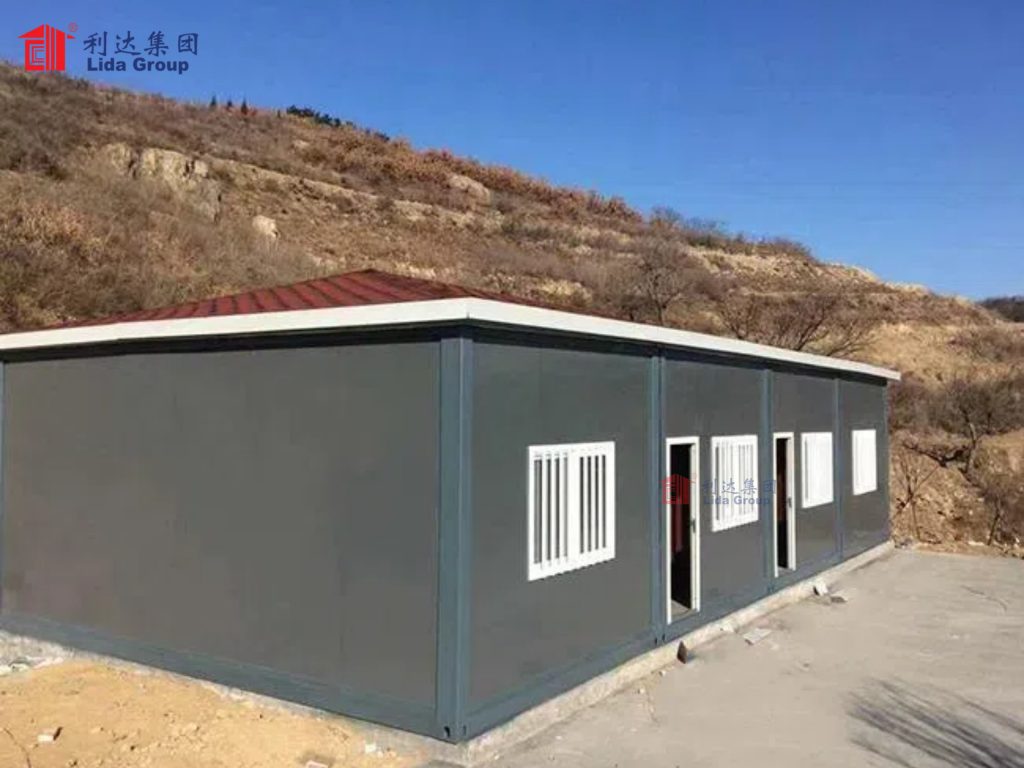**Introduction: A Global Imperative for a New Housing Paradigm**
The world stands at a demographic and environmental crossroads. Rapid urbanization, escalating construction costs, a pervasive affordable housing crisis, and the urgent need for sustainable development are converging to create unprecedented challenges for cities and populations worldwide. Traditional brick-and-mortar construction, often slow, wasteful, and resource-intensive, is increasingly ill-suited to address these 21st-century demands. In this landscape of necessity, innovation thrives, giving rise to a transformative vision for the future of housing: one that is agile, affordable, sustainable, and community-oriented.
At the forefront of this architectural revolution is Lida Group, a pioneer whose low-cost prefabricated construction methods are redefining the possibilities of modern living. By harnessing the inherent potential of modified shipping containers, Lida has developed a sophisticated system for creating mobile container house communities that offer a compelling solution to global housing challenges. This approach transcends the simplistic notion of “living in a box”; instead, it represents a holistic philosophy of efficient manufacturing, intelligent design, and community-centric planning. Lida’s work demonstrates that high-quality, dignified, and modern housing can be accessible, rapidly deployable, and environmentally responsible. This article explores how Lida Group’s innovative use of prefab container construction is not just an alternative building method but a blueprint for the future of resilient, adaptable, and affordable housing communities.

**Section 1: The Genesis of an Idea – From Shipping Container to Living Space**
The use of shipping containers in architecture is not entirely new, but Lida Group has elevated it from a niche, DIY concept to a scalable, industrial-grade solution. The foundation of this innovation lies in the inherent virtues of the ISO standard shipping container itself.
**1.1. The inherent Structural Advantages:**
Shipping containers are engineered for extreme durability. Designed to withstand the brutal forces of ocean transport, including stacking under immense loads and exposure to corrosive saltwater environments, they possess exceptional structural integrity. Their steel frame construction provides a strong, rigid, and modular unit that serves as a perfect primary structural system for building. This inherent strength translates into safety, longevity, and resistance to natural elements like earthquakes and high winds, which is a significant advantage over many traditional low-cost housing materials.
**1.2. The Modular Imperative:**
The true genius of the container lies in its modularity. Manufactured to standardized dimensions (primarily 20ft and 40ft lengths), containers are inherently designed to fit together. This standardization is the key to prefabrication. It allows for mass production, where individual living units can be manufactured concurrently in a factory setting, with a level of precision and quality control impossible to achieve with on-site construction. This modularity also allows for incredible flexibility in design; containers can be stacked vertically (like LEGO bricks) or arranged horizontally in countless configurations to create a variety of building forms, from single-family homes to multi-story apartment complexes.
**1.3. A Second Life for a Global Resource:**
While new containers are used for certain applications, the potential to repurpose retired shipping containers aligns perfectly with principles of the circular economy. With millions of containers sitting idle in ports around the world, they represent a vast, underutilized resource. By giving these robust structures a new life as homes, Lida’s approach reduces the demand for virgin construction materials like brick and concrete, the production of which carries a heavy carbon footprint. This “upcycling” is a foundational element of the sustainability narrative.
**Section 2: The Lida Group Difference – Engineering Excellence in Prefabrication**
Lida Group’s success is not merely in choosing containers as a material, but in the sophisticated, systematic, and engineered approach they apply to their transformation. Their factories are hubs of efficiency where raw containers are converted into high-quality habitable spaces.
**2.1. The Factory-Controlled Conversion Process:**
The conversion process is a meticulously planned assembly line operation inside Lida’s specialized facilities. This controlled environment is critical to achieving low cost, high speed, and superior quality.
* **Stage 1: Inspection and Preparation.** Containers are rigorously inspected for structural soundness. They are then sandblasted to remove old paint and corrosion, and any necessary structural repairs are made.
* **Stage 2: Cutting and Modification.** Using computer-guided plasma cutters, openings for doors, windows, and skylights are cut with precision. For multi-unit designs, entire wall sections are removed to create open-plan living spaces. Structural reinforcements are welded in to maintain integrity after modifications.
* **Stage 3. Insulation and Climate Control.** This is arguably the most critical step for comfort and energy efficiency. Lida employs advanced insulation techniques, such as spraying closed-cell polyurethane foam insulation directly onto the interior walls and roof. This creates a seamless, high-R-value thermal barrier that prevents thermal bridging (a common issue with metal buildings) and effectively controls condensation. This ensures the home remains cool in summer and warm in winter with minimal energy input.
* **Stage 4: Interior Build-Out.** The pre-wiring for electrical systems, plumbing lines for bathrooms and kitchens, and ducting for HVAC are installed. Interior wall linings (such as drywall or sustainable bamboo panels), flooring, and pre-fabricated bathroom and kitchen pods are then installed. This is all completed with the efficiency of an assembly line.
* **Stage 5: Exterior Finishing and Quality Control.** The exterior is finished with protective coatings and cladding systems that can mimic wood, brick, or other aesthetically pleasing materials, moving the design far beyond the industrial container aesthetic. A final, rigorous quality control check ensures every unit meets Lida’s stringent standards before being shipped.
**2.2. The Power of Prefabrication:**
This factory-based process delivers undeniable advantages:
* **Speed:** A single container unit can be fully converted into a livable space in a matter of days. An entire community’s worth of housing can be produced simultaneously while site preparation (grading, utility connections, foundation work) occurs in parallel. This can reduce overall project timelines by 50-70% compared to conventional construction.
* **Cost-Effectiveness:** Factory efficiency, bulk purchasing of materials, and a reduced reliance on skilled on-site labor in unpredictable weather conditions drastically lower the overall cost per unit. This makes quality housing accessible to a much broader segment of the population.
* **Predictable Quality:** The controlled factory environment eliminates the variables that plague on-site construction—rain, wind, temperature fluctuations, and inconsistencies in workmanship. Every unit that leaves the factory is identical in its quality and performance.

**Section 3: Designing for Modern Living – Beyond the Basic Box**
A common misconception about container homes is that they are cramped, dark, and industrial. Lida Group’s designs actively shatter this stereotype through intelligent architectural principles.
**3.1. Spatial Innovation and Flexibility:**
By combining multiple containers, Lida creates spacious and dynamic interiors. Containers can be placed side-by-side to create wide, open-plan living areas, or stacked in offset configurations to create cantilevered sections and multi-level layouts. The use of large, double-glazed windows and glass doors, and the strategic placement of skylights, floods the interiors with natural light, creating a bright and airy atmosphere that belies the unit’s modular origins.
**3.2. Customization and Aesthetic Appeal:**
Lida offers a high degree of customization. Clients can choose from a catalog of pre-designed models or work with Lida’s designers to create a bespoke layout. Exterior cladding, interior finishes, flooring, and fixtures can be selected to suit a wide range of tastes, from modern minimalist to rustic chic. The result is a home that is visually appealing and personalized, not a standardized, impersonal product.
**3.3. Inherent Mobility and Adaptability:**
A key feature of Lida’s container units is their mobility. Because each unit is a self-contained structure, it can be easily transported via truck, rail, or ship to virtually any location. This mobility opens up new possibilities for housing:
* **Temporary Communities:** For disaster relief, workforce housing for remote mining or infrastructure projects, or seasonal tourist accommodations.
* **Incremental Development:** A community can start small and expand organically as demand grows, with new units seamlessly added to the existing layout.
* **Relocation:** If a resident needs to move, their home can, in theory, move with them, offering a previously unimaginable level of flexibility.
**Section 4: The Community Scale – From Individual Units to Integrated Neighborhoods**
The true potential of Lida’s system is fully realized at the community scale. The goal is not simply to place individual container homes on a plot of land, but to design integrated, sustainable, and vibrant neighborhoods.
**4.1. Master Planning and Site Design:**
Lida Group approaches community planning with a focus on human connection and sustainability. Master plans incorporate:
* **Pedestrian-Friendly Layouts:** Prioritizing walkable pathways over car-centric streets, encouraging interaction among residents.
* **Shared Green Spaces:** Central parks, community gardens, and playgrounds become the heart of the community, fostering a sense of belonging and providing recreational space.
* **Shared Amenities:** Community centers, laundromats, co-working spaces, and cafes can be constructed using the same container system, creating a self-contained ecosystem that meets diverse resident needs.
**4.2. Integrated Infrastructure and Sustainability:**
A modern mobile community is designed with off-grid capabilities or highly efficient utility integration.
* **Renewable Energy:** The large, often shaded roofs are ideal for the installation of solar panels, potentially allowing communities to generate their own clean electricity.
* **Water Management:** Systems for rainwater harvesting and greywater recycling can be incorporated to reduce water consumption and reliance on municipal systems.
* **Waste Management:** On-site composting and waste sorting facilities can be integrated to minimize the community’s environmental footprint.

**Section 5: Addressing Global Challenges with Practical Solutions**
Lida’s model presents tangible solutions to some of the world’s most pressing problems.
**5.1. The Affordable Housing Crisis:**
In urban areas where land and construction costs are prohibitive, Lida’s low-cost, high-density model can create attractive housing options for students, young professionals, and low-to-middle-income families, helping to alleviate pressure on the housing market.
**5.2. Disaster Relief and Emergency Shelter:**
In the aftermath of natural disasters, the speed of deployment of a Lida container community is invaluable. These units provide durable, secure, and dignified temporary housing that is far superior to tents or temporary trailers, and can even become permanent settlements as communities rebuild.
**5.3. Sustainable Urbanization:**
As cities grow, the need for dense, efficient, and sustainable housing is paramount. Container communities can be developed on infill sites or urban peripheries with a minimal environmental footprint, promoting sustainable urban expansion.
**Section 6: The Path Forward – Challenges and Evolution**
While the model is promising, its widespread adoption faces challenges, including outdated zoning regulations, lingering perceptions about quality, and the logistics of large-scale utility integration for mobile communities. However, Lida Group is actively working to address these by engaging with policymakers, showcasing high-profile projects, and continuing to innovate in areas like smart home technology integration and even more advanced sustainable building systems.
**Conclusion: A Blueprint for a Resilient and Adaptive Future**
Lida Group’s pioneering work in low-cost prefab container construction represents a fundamental shift in the philosophy of housing. It moves away from the slow, static, and resource-exhaustive model of the past towards a future that is dynamic, efficient, and deeply aligned with the needs of both people and the planet. By mastering the art and science of prefabrication, Lida has demonstrated that affordability need not compromise quality, that speed need not sacrifice durability, and that mobility need not preclude community.
The modern mobile container house communities enabled by Lida’s technology are more than just collections of houses; they are testaments to a new way of thinking about how we live. They offer a vision of housing that is resilient in the face of change, adaptable to individual and collective needs, and responsible in its use of the Earth’s resources. They provide a dignified, high-quality answer to the urgent demand for affordable shelter, from thriving megacities to disaster-stricken regions.
As the global population continues to grow and urbanize, the challenges of housing will only intensify. Lida Group’s model offers a scalable, practical, and sustainable blueprint for the future. It is a future where homes are manufactured with the precision of automobiles, where communities are designed for human connection and environmental harmony, and where the dream of safe, secure, and modern housing becomes a reality for many more people around the world. In the evolving story of human habitation, Lida Group is not just a chapter; it is a compelling prologue to what comes next.

Related news
-
Emergency Housing Solutions Transformed by Lida Group's Rapid Deployment Prefabricated Container Building Systems
2025-09-26 17:38:33
-
Lida Group's Advanced Prefabricated Container Building Technology Delivers Customizable Mobile Modern Container House Solutions
2025-09-28 10:20:05
-
Lida Group Pioneers Eco-Friendly Prefabricated Container Building with Smart Mobile Modern Container House Features
2025-09-26 17:27:49
contact us
- Tel: +86-532-88966982
- Whatsapp: +86-13793209022
- E-mail: sales@lidajituan.com


